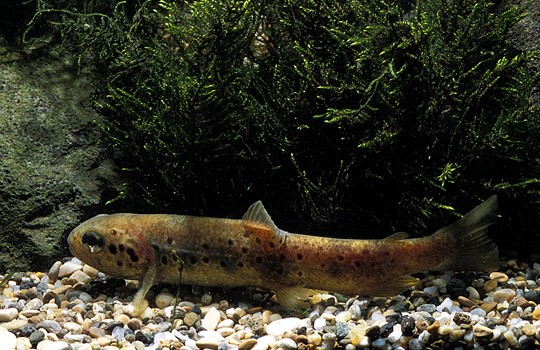A cooperative network to progress towards high quality standards: an interview with protected areas expert Corrado Teofili
This is the fifth in a series of interviews with Natura 2000 experts as part of the LIFE Green List for N2K project. Over the years Corrado Teofili has worked with innumerable Natura 2000 sites of varying habitat types and dimensions; contributing to conserve a countless number of natural ecosystems and their inhabitants.
Corrado’s career began along the river Tiber as a park guide showing students “the beauty and fascinating complexity of biodiversity”. His passion soon won him the position of park director of a Natura 2000 site that came with the responsibility of protecting endemic and rare species within the area. He now works for Italy’s National Federation of Parks and Natural Reserves, ensuring the compliance of Italy’s parks with the EU nature directives, making him a Natura 2000 site expert and member of the IUCN Green List European Core Working group.
In his interview Corrado explained what he believes to be the main challenges facing effective protected area management in Europe, “nature conservation and effective protected area management still proves to be a significant challenge in many European countries. This is often due to a conflict of interest between those who value the exploitation of natural resources above protected area management needs.” Corrado also highlights that in many cases it is the lack of political willingness to solve urgent and widespread ecological problems that acts as an obstacle to finding efficient solutions to the current climate crisis. “In short, I believe we (Europe) have a responsibility to act as an example to the rest of the world by successfully adopting a wise management plan of our natural resources. In this way we can demonstrate that there is a practical solution to reverse the condition of our planet”.
The Natura 2000 network is huge and contains many different types of ecosystems and biodiversity assemblages that each face threats specific to their region. However, they are all part of the same managing system, making it difficult to rely on any singular monitoring methodology to assess the conservation performance of Natura 2000 sites. Corrado says that there is a “need for a tool that can guide site managers towards gaining better results. The most useful platform would be one where similar sites could share and compare management strategies to identify the practices that produce the best results for their particular site. The IUCN Green List approach can provide this added value to the Natura 2000 network at Regional, National and EU levels.” He also highlights that Europe devotes a large amount of funding and resources to welfare and so implementing policies and activities for protected areas should be straightforward to plan and realize.
Although Corrado has worked on many sites it is the “Lago di Posta Fibreno” park in central Italy that lies closest to his heart. The Park is home to a vulnerable trout species, the Fibreno trout (Salmo fibreni), that can only be found in the lake at the park’s centre, making it crucial to ensure that the lake is not put under threat from external pressures. If this lake’s chemistry is affected in a way that is unfavourable to the trout, they will be gone forever, highlighting the fragility of our environment under the current biodiversity crisis. As Corrado says, ‘biodiversity is both beautiful and complex’; Europe’s parks are no exception and should be highly valued, admired and protected.


